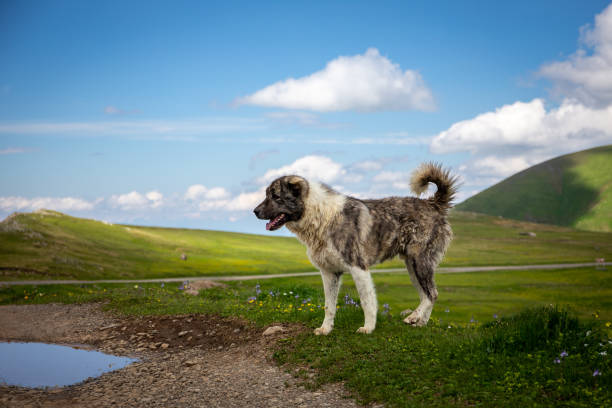Caucasian Shepherd

Breed History:
The Caucasian Shepherd Dog, or Caucasian Ovcharka, is one of the most powerful and ancient livestock guardian dogs, originating in the Caucasus Mountains region, spanning Russia, Armenia, Georgia, and Azerbaijan. This massive breed has been used for centuries to guard flocks, property, and people from predators like wolves, bears, and human intruders.
The breed evolved naturally in harsh mountain environments, developing extreme weather resistance, fearlessness, and independence. In the Soviet era, the Caucasian Ovcharka was further refined for use in military and border patrol work, especially along the East German border. It became known for its incredible protective instincts and physical strength.
Today, the breed is still widely used in Eastern Europe and Central Asia for guarding duties, and is slowly gaining recognition as a companion for experienced owners.
|
Gender |
Height |
Weight |
|
Male |
72-75 cm |
Min. 50 kg |
|
Female |
67-72 cm |
Min. 45 kg |
Size – Large
Life Expectancy: 8-12 years

Breed Appearance:
The Caucasian Ovcharka is a massive, heavily-boned dog with a broad chest, muscular build, and a thick double coat. Its head is large and powerful, with strong jaws and a short, blunt muzzle. The ears are often cropped in working lines, though natural ears are medium and droop forward.
The coat is long, medium, or short, depending on the region of origin. It comes in grey, fawn, cream, brindle, white, or piebald, often with a darker face mask.
Breed Type - Family/guard:
The Caucasian Shepherd Dog is a formidable guardian, known for its loyalty and protective instincts. Due to their territorial instincts, they may be wary of strangers, making them excellent guard dogs but necessitating supervision in unfamiliar situations.
In Russia, they are commonly used as prison dogs due to their guarding capabilities and are also capable of fighting off bears and wolves to protect livestock.

Training:
The breed is intelligent but very independent:
-
Needs very early socialisation and firm, experienced training
-
Not suited for novice or timid owners
-
Positive reinforcement and calm consistency work better than force
-
Can be stubborn, dominant, and willful if not raised correctly
-
Obedience is essential for safe handling in public or unfamiliar environments
An improperly trained Ovcharka can become aggressive or uncontrollable.
Health & Care:
A hardy, mountain-born breed, but some health concerns include:
-
Hip and elbow dysplasia
-
Obesity (especially in low-activity homes)
-
Heart issues (in older dogs)
-
Bloat (gastric torsion)
-
Ear infections in uncropped ears, if neglected
A balanced diet, joint support, and regular health screenings are crucial. They are generally resistant to disease and thrive in cold weather.

Living Conditions:
The Caucasian Ovcharka requires space and a purpose:
-
Not suitable for apartment life or inexperienced handlers
-
Needs a securely fenced yard or rural setting
-
Does best in cold or temperate climates
-
Poor choice for homes with frequent visitors or social gatherings
-
May not tolerate other pets unless raised with them early
It must work or guard something—this breed is not decorative.
Exercise:
Moderate daily activity keeps them healthy:
-
Needs 60–90 minutes of moderate activity daily
-
Enjoys patrolling territory, walking, or pulling sledges
-
Doesn’t require intense exercise, but mental stimulation is vital
-
Avoid over-exercising pups to protect their joints
They are calm indoors when exercised, but can become restless or destructive if bored.
Grooming:
Depends on coat length, but generally moderate:
-
Brush 2–3 times a week; daily during heavy shedding seasons
-
Bathe occasionally—coat is naturally dirt-resistant
-
Regular ear checks, nail trimming, and dental care
-
Shedding is seasonal and heavy, especially in long-haired types
Despite its size, the breed does not typically have a strong doggy odor.

Advantages:
-
Extremely protective – excellent livestock and property guardian
-
Loyal and deeply bonded with family
-
Intimidating appearance – strong natural deterrent
-
Independent and confident – can work without direct supervision
-
Thick double coat protects in harsh climates
-
Generally calm and quiet indoors if well-trained
Disadvantages:
-
Not suitable for first-time dog owners
-
Requires extensive socialisation and firm, experienced handling
-
Can be aggressive toward strangers and unfamiliar animals
-
Very large and powerful – needs space and secure fencing
-
High grooming needs during seasonal shedding
-
Can be stubborn and challenging to train
-
May not adapt well to urban or apartment life







